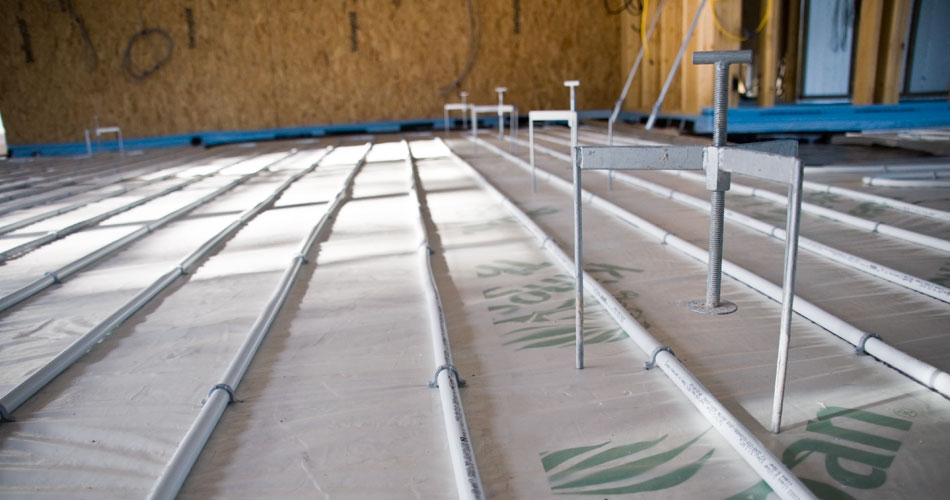Floor Preparation Guidelines
It is vital that the floor preparation is to the highest standard, otherwise it could affect the quality of the screed. Your building needs to be:
- Weather tight – the roof should be covered and all external doors and windows must be fitted or covered with polythene.
- Clean – the floor must be free of any debris.
Please avoid using foil backed tape (often supplied with insulation boards) in areas where it will be in contact with the screed. The metal can react with the screed and create gases.
Insulation
Insulation
- The sub-base should be as flat as possible before laying any insulation boards. It may be necessary to remove high points or fill in low points.
- Insulation boards are often slightly curved. If this is the case, lay the boards so they are curved downwards (higher in the middle) to minimise movement.
- Boards should be laid staggered and tightly jointed.
Membrane & perimeter strip
Membrane & perimeter strip
- Lay a polythene sheet (500 gauge) across the entire floor and run it slightly up the walls (above finished screed level) to create a bath. Avoid creating air pockets and creases.
- It needs to be completely water-tight, so tape any overlaps or punctures with gaffa tape to ensure no screed can escape.
- Perimeter strip must be installed at all wall/floor junctions and around all columns, pipework etc.
- Ensure polythene/perimeter strip is pushed fully into all corners to avoid air pockets.
Underfloor heating
Underfloor heating
- Ensure all heating pipes are firmly fixed to the insulation using the supplied clips.
- Warm water systems should be primed prior to the installation of the screed. This reduces the risk of pipes floating and allows any issues to be addressed before the screed is installed.
- The plumber (or whoever installs the underfloor heating pipes) should ensure conduit is fitted around all pipes that are running close together. This avoids unnecessarily heating areas of the floor (usually close to the manifold).

